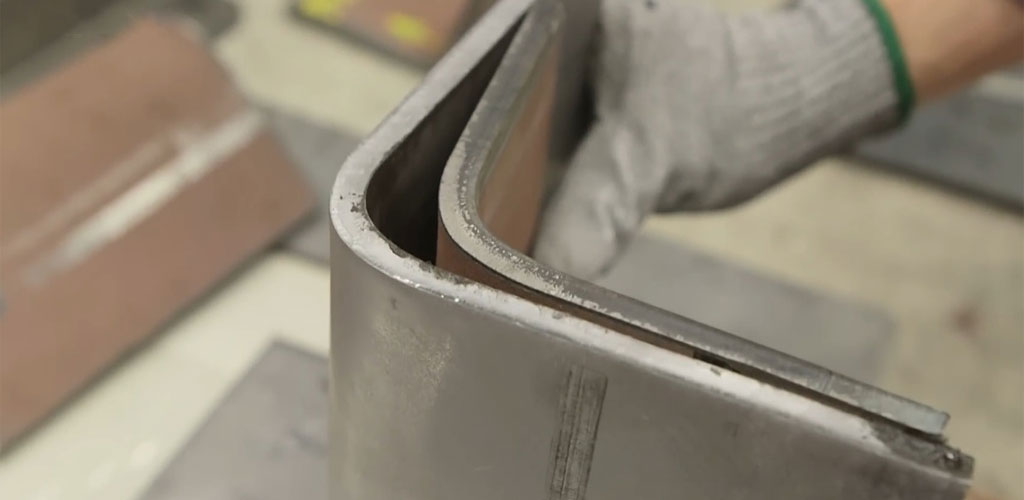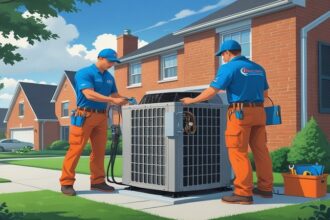From car parts to home appliances, sheet metal fabrication is everywhere. But there is a challenge: sheet metal defects behind the smooth look of a workpiece. These defects may result in poor surface quality, affect the proper functioning of the parts, and high cost to fix these defects. Common defects include burrs, Wrinkles, and cracks.
Through this guide, let’s master the common defects in sheet metal work and how smart methods and strategies can help you avoid these common defects.
What Are Sheet Metal Defects?
Imperfections or defects that occur during the manufacturing process, like stamping, bending, or forming, are called sheet metal defects. These defects affect the sheet metal form, shape, function, and result in defects like cracks, wrinkles, surface abrasions, or burrs.
These defects can be small or large, resulting in weaker metal, which ultimately affects functioning. It’s important to pay attention to these defects early to get this work done smoothly.
Sheet Metal Stamping Defects
- One of the most common problems is tearing. It occurs due to the excessive tensile force applied to a thin material, which creates stress concentration points, compromising structural integrity in load-bearing parts like automotive brackets. Tearing makes the part weak. And it leads to rejection. To avoid this issue, increase punch/die radii.
- Another issue is distortion. This is when the metal bends or warps incorrectly because of uneven pressure or stress distribution. It can be due to misaligned dies (>0.1mm offset). Improper annealing of cold-rolled steel may also lead to distortion. Implement overbending (additional 2-5 degrees of target angle)
- A distorted part may result in improper functioning.
Sheet Metal with Burrs After Cutting
- Galling is also another problem that is due to improper lubrication. It causes bumpy, rough spots on the metal surface because of friction between the die and the sheet. Surface roughness exceeds Ra 0.8μm, causing seal failure in fluid systems. Due to galvanizing, the surface quality is reduced and can build up on tools. To avoid this issue, Polish dies to less than 0.2μm surface finish and apply PTFE-based dry film lubricants
Sheet Metal Forming Defects
Most Common sheet metal forming defects are:
Necking
Necking means localized thinning. It occurs when a part of the sheet becomes too thin because of pulling forces forming a neck. If forming keeps going, necking can lead to cracks. This usually occurs when the material is overstretched or low elongated.
Comparison of Wrinkled and Smooth Sheet Metal Forms
- Another common defect is wrinkling. Small folds and rippling occur when the compressive forces on the sheet exceed its ability to deform elastically. Poor die clearance or low blank holder pressure causes wrinkles.
- Orange peel is a type of surface flaw when the metal has large grain structures. After the metal is formed, the surface feels like sandpaper, sometimes similar to the texture of an orange peel.
Sheet Metal Bending Defects
- Bending defects come up when the metal is bent to a certain degree. It’s a simple process, but it can cause defects if not done carefully.
Cracking Metal Stamping
- Cracking is one of the most common defects that occur during sheet metal bending. Bends may occur on both sides, inside or outside, which is a kind of structural failure. It usually occurs in materials with low ductility or when a small bend radius is applied. You can prevent this issue by selecting the metal which are highly ductile and using a larger bend radius.
Springback Effect in Sheet Metal Bending
Alt text: Diagram showing sheet metal bending process with punch, die, and springback effect.
- Springback is also a defect in sheet metal fabrication. After the applied force is removed, metals try to regain their original position. It depends on factors like Yield Strength and Young’s Modulus. If the value is higher, it shows more springback. Metals with high material properties (yield strength and Young’s modulus) spring back more.
- Bending defects can be easily minimized by selecting appropriate bend radii, sharp and clean dies, and springback compensation by careful angle control with CNC tools.
How to Avoid Typical Sheet Metal Defects
Sheet metal defects can be avoided by:
- In order to prevent these flaws, use softer metals. Moreover, improve their malleability by heating and then cooling them slowly.
- The selection of the right parameters is necessary such as punching speed, deforming forces,bend radius, and angle combined with tooling maintenance.
- To avoid surface flaws on sheet metal bends can be easily controlled by making sure the tools’ lubrication, wear and tear issues are addressed.
- One tactic to prevent bends with wrinkles is to simulate or prototype. This will help you determine the right parameters to use for a defect-free bend.
- Metals are prone to splitting if they are unable to tolerate a particular amount of strain or extension. Splitting can also occur when metals that can tolerate elongation are subjected to excessive pressure or force. In order to guarantee that the proper force is applied throughout the manufacturing process, it is advised to maintain a balance.
- Overbending is a popular strategy for preventing springback. The bent stays in place when a little pressure is applied over the intended amount. Additional tactics include employing a smaller punch radius and increasing the die angle.
Improving Fabrication Quality
Strict planning and robust design are necessary for accurate sheet metal manufacturing. The fabricators must comprehend the details of sheet metal design. Collaboration with the expert engineers and designers is a must for an optimised fabrication and assembly. Hence, costly errors and rework are reduced with careful planning.
CNC machining has several benefits, such as accuracy, safety, and efficiency, when it comes to metal manufacturing. Additionally, the technology enables mass customisation and shortens lead times. CNC machining can produce complicated parts and boost output. It decreases scrap and lowers the demand for storage space. It is helpful in better production scheduling and cost savings. It can provide records and better tracking for the Industries that are following ISO or aerospace standards.
Technology and Innovation in Sheet Metal Work
Sheet metal manufacturing continues to develop and embrace the opportunities presented by new technology. Sheet metal manufacturing has a bright future ahead with increased quality and productivity due to efficiency and the smart use of digital tools. Manufacturers may overcome the obstacles ahead and take advantage of the opportunities of these cutting-edge technologies. It brings them to propel advancement and success in the coming years with innovation and adjusting to the changing environment.
With the advent of cutting-edge technologies like automation, artificial intelligence, and additive manufacturing, the sheet metal production sector is changing quickly. Scratching and misalignment issues are handled and reduced by robotics. Machine learning uses camera based inspection for finding defects. Simulation software helps designers to detect sheet metal behavior before any actual processing begins. Digital fabrication tools make production more efficient and eco-friendly.
Final thought
Sheet metal defects can slow things down, raise costs, and damage your reputation.
But with the right skills, machines, and quality checks, they can be avoided.
From design to delivery, the goal is clear: make parts that work well, look good, and last long.
Companies like ProleanTech are leading the way by combining expert teams with advanced tools. Their sheet metal fabrication techniques ensure top-level precision for complex and simple metal parts.
The future of fabrication is about automation, precision, and making parts without defects.
Master the science, apply the right techniques, and team up with the right experts. And you’ll turn raw metal into high-performance products, every time.
















